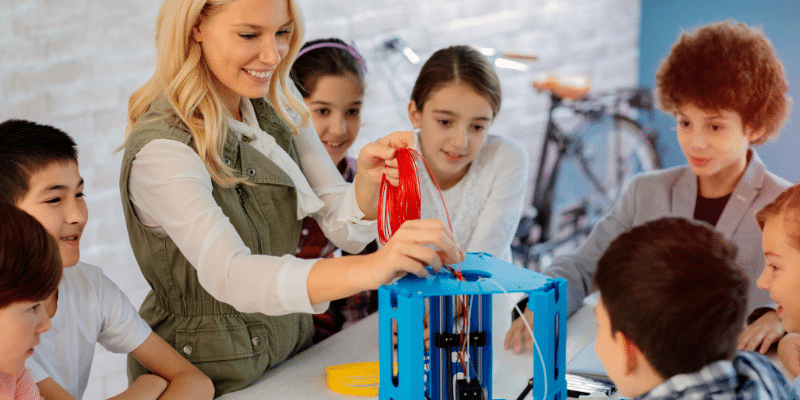Microschools have become a hot topic over the last few years. Their big appeal is that they promise to do a better job catering to students’ and families’ individual needs and interests. But right now, they only serve about 2% to 4% of US students. So, could microschools eventually become the new normal in schooling?
Well, let’s see what innovation theory has to say about this question. To start, we first need to take a quick dive into the history of the steel industry (and yes, and I promise it relates).
From the mid 1800s until the 1960s, steel came from massive integrated mills. These large mills did everything from reacting iron ore, coke, and limestone in blast furnaces to rolling finished products at the other end. It would cost over $12 billion to build a huge, new integrated mill today.
Then in the 1960s, a new type of steel mill called the minimill entered the scene. Unlike their giant predecessors that needed large blast furnaces to process raw ore, minimills made new steel products by melting scrap steel using a new technology called the electric arc furnace.
These minimills transformed the economics of steel production. Whereas an integrated mill today might cover two to four square miles and would cost around $12 billion to build, minimills are less than a tenth the size of an integrated mill and only cost around $800 million.
But early minimills had a problem. Because the scrap steel they recycled varied in its chemical makeup, they could only make certain steel products like rebar.
But from the 1960s to the 1990s, as the technology improved, minimills were gradually able to produce more and more of the products made in larger and more expensive integrated mills. First angle iron, then structural steel for buildings, then finally sheet steel for things like soup cans and cars
What does this have to do with microschools?
Microschools are small, independent schooling programs. They often have students of mixed age groups and one or two educators who facilitate the learning experiences.
Just as minimills operate at a smaller scale compared to integrated mills, microschools are much smaller than conventional schools. They typically only serve around 15 to 40 students—much smaller than the typical school with hundreds to thousands of students.
As with minimills, the physical facilities of most microschools are also small and lean. Whereas most conventional schools have large, expensive campuses with multiple buildings, playgrounds, and athletic fields, microschools often operate out of homes, churches, retail space, or office buildings, and use nearby public parks for their outdoor facilities.
Also, just as minimills keep their costs down by recycling scrap steel, microschools take advantage of community and online resources to keep their costs lean.
Whether microschools become mainstream alternatives to conventional schooling remains to be seen.
Just like minimills had to improve their technology over time to offer a wider array of steel products, microschools will have to evolve if they hope to serve a wider array of students and families.
Today’s microschools aren’t for everyone. They’re limited in their ability to provide diverse social interactions, extracurricular activities, and specialized support for unique educational needs, making them an unproven and un-enticing option for many families.
So what’s the takeaway? Microschools may someday disrupt conventional schooling just like minimills disrupted integrated mills. They definitely have some of the key ingredients. But we’ll have to wait and see whether they can evolve to become compelling alternatives to conventional schooling.



